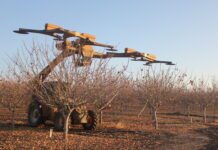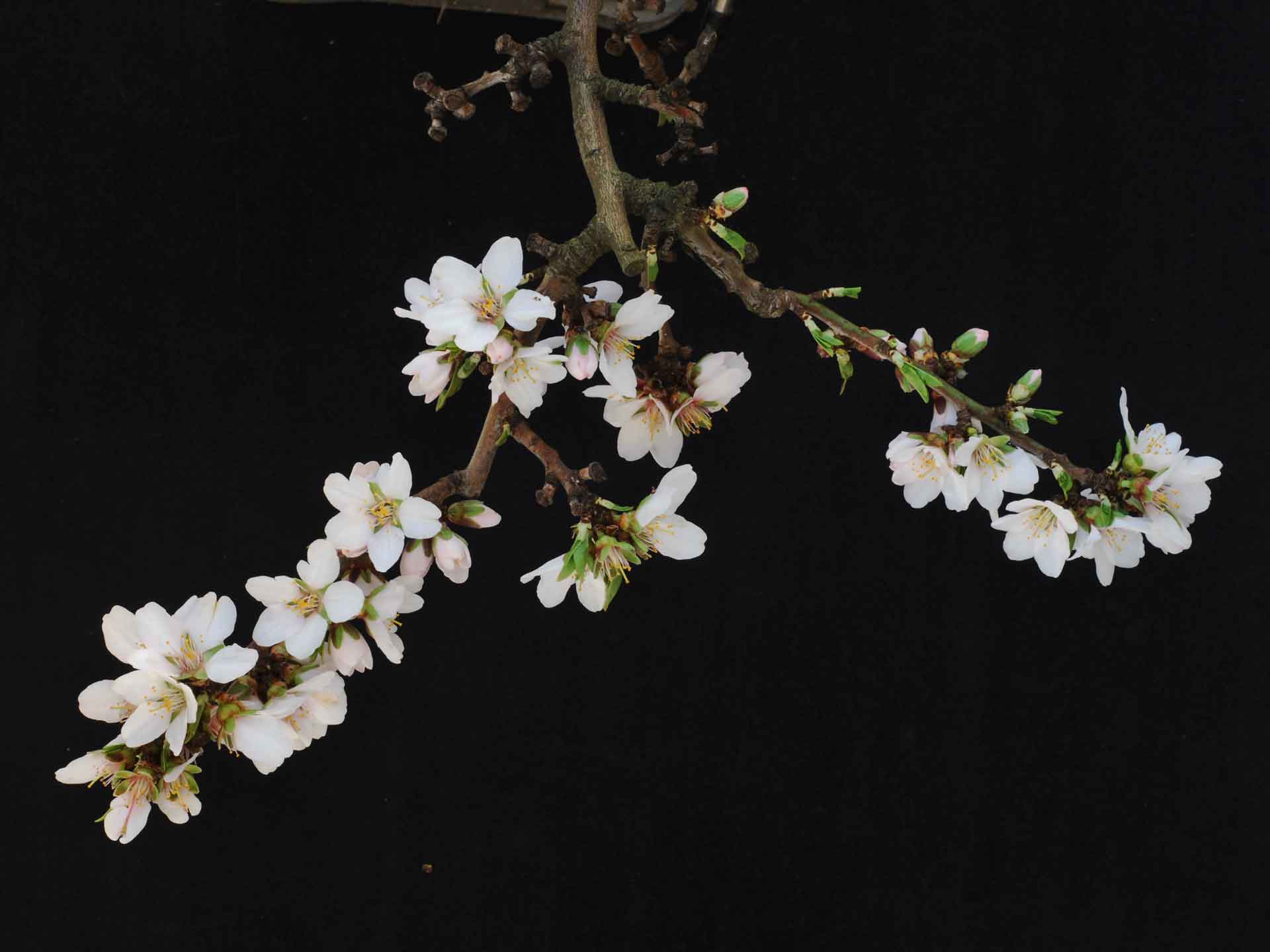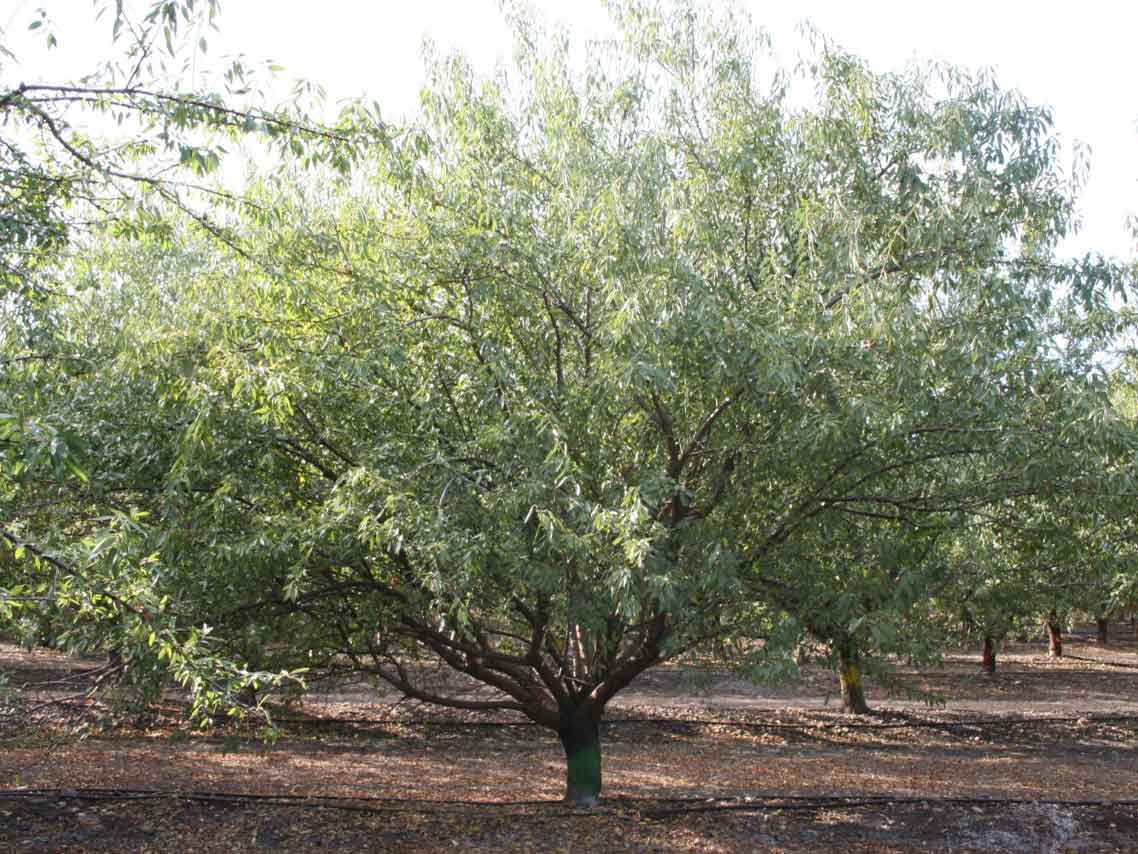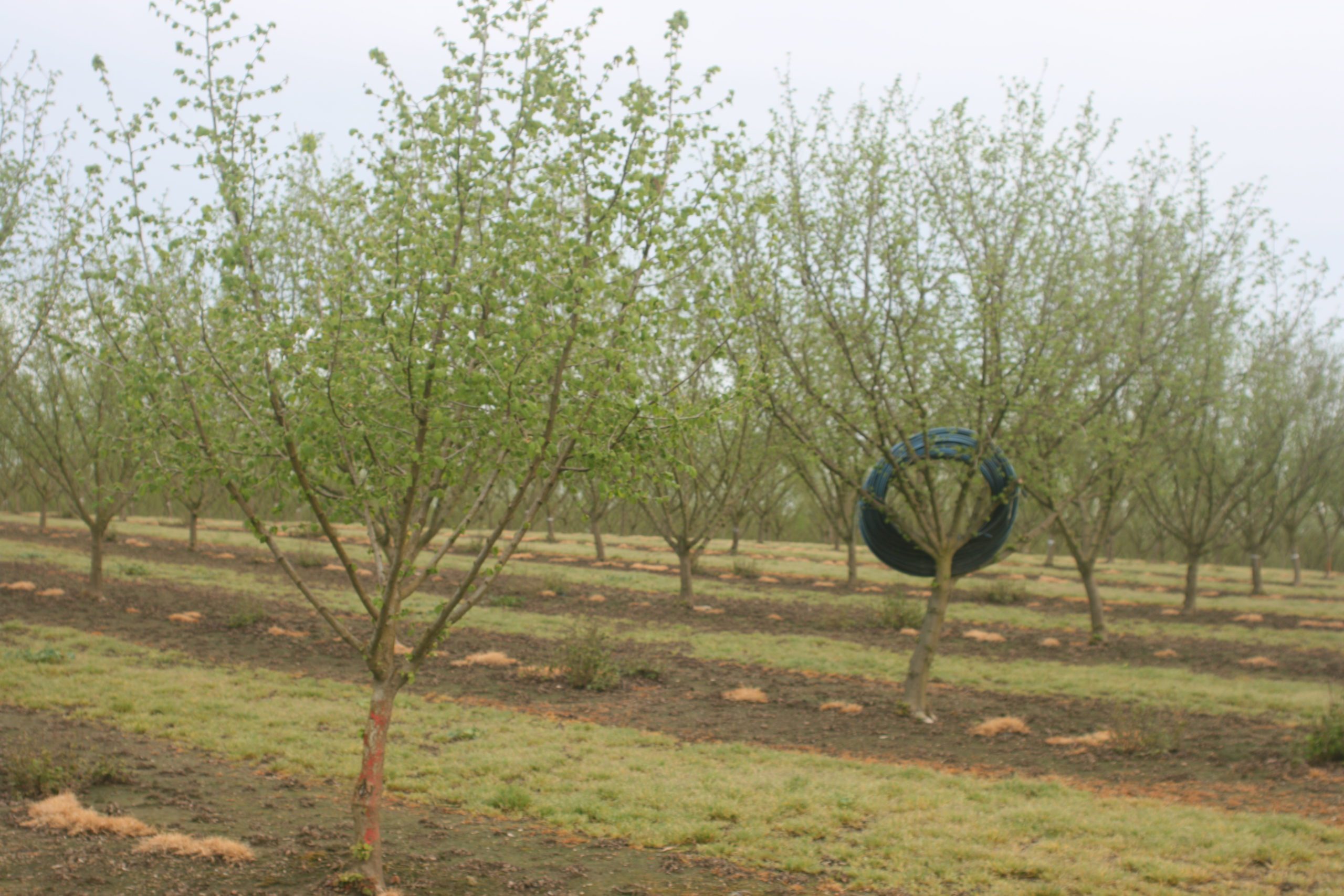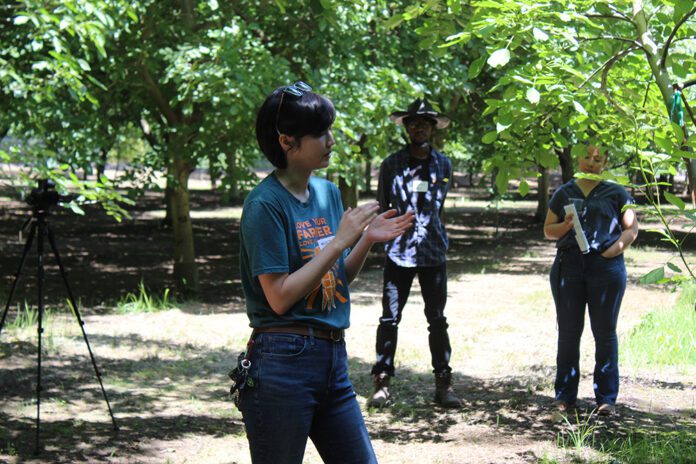
Preliminary results from a new pest management trial offer insight into how layered biological strategies could help control spider mites in walnut orchards. The trial combines predatory mite releases, a predatory-attractive food spray and methyl salicylate, a compound that attracts beneficial insects. Funded by CDFA’s Biologically Integrated Farming Systems program, the project was inspired by Sacramento Valley grower Daniel Unruh, who has used the process for several years, according to Moet Takata, ecological pest management program manager for Community Alliance with Family Farmers (CAFF).
The study spanned eight sites within orchards and vineyards in the Sacramento and Northern San Joaquin valleys, including a walnut orchard in Linden, Calif., where CAFF recently hosted a field day on spider mite management and irrigation.
Researchers released Neoseiulus californicus, a commercially available predatory mite, using drones to cover trees uniformly. They also applied a predatory food spray made from soy flour, yeast and sugar to sustain beneficials when pest levels were low and introduced methyl salicylate, which mimics a plant’s distress signal to draw natural enemies.
In 2023, unseasonably wet conditions suppressed spider mite populations, with pest pressure staying low across all trial sites. Few predatory mites were found, and none were the specialist predators released. Takata explained that predatory mite species vary in behavior and effectiveness.
“You have your specialists, which are specialized to eat spider mites, they’re really good at it, and then you have generalists, which will eat spider mites, but they’ll also eat other insects, some will even eat pollen and nectars,” she said.
In 2024, a hot, dry season brought a spike in mite pressure, creating a more revealing test. The block treated with only food spray showed the lowest mite pressure, while the block treated only with methyl salicylate saw the highest, likely influenced by placement near dusty roadways, which favor mite outbreaks. A block treated with both methyl salicylate and predatory mites showed modest improvement, suggesting that layering treatments could be more effective than single strategies.
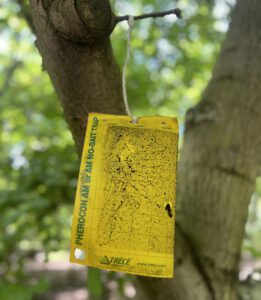
Predatory mite numbers also increased noticeably right after the drone releases. However, sticky cards monitoring overall beneficial populations revealed fewer six-spotted thrips, another key natural enemy, in predatory mite release blocks.
“So that’s a suggestion that maybe they’re competing with each other,” Takata said.
Pest control results varied based on the year, weather, predatory species and even treatment block location. The trial used N. californicus because it was readily available, but many growers prefer Galendromus occidentalis, which performs better in hot, dry conditions but is harder to source. Takata noted efforts are underway to make G. occidentalis more available.
“Generally, you can tell there’s a lot of nuances in between, not just the treatment, but also the year and the weather and then how the bugs interact with each other,” she said.
Grower practices also influenced outcomes. Jason Colombini, who owns the Linden orchard where the CAFF field day took place, said his trees have avoided major spider mite outbreaks the past two years after adjusting his spray program.
“We had a really bad issue with spider mites three years ago and we switched up how we’re doing it,” Colombini said. “We haven’t had an issue with mites the last two years outside of this block.”
His standard approach includes a Zeal and ABBA mix (active ingredients etoxazole and abamectin, respectively), with only one application typically needed.
Researchers note integrated pest management trials like this often produce mixed signals, but the insights are valuable, with the goal of building systems that are both effective and environmentally sustainable.
“Make sure everything you’re doing is benefiting your beneficial population and not detracting from it,” Takata said. “That way, they’re kind of set up to be able to come in and provide that control.”
CAFF is still analyzing data from all eight sites and will share results in the future.

Kristin Platts | Digital Content Editor and Social Correspondence
Kristin Platts is a multimedia journalist and digital content writer with a B.A. in Creative Media from California State University, Stanislaus. She produces stories on California agriculture through video, podcasts, and digital articles, and provides in-depth reporting on tree nuts, pest management, and crop production for West Coast Nut magazine. Based in Modesto, California, Kristin is passionate about sharing field-driven insights and connecting growers with trusted information.








